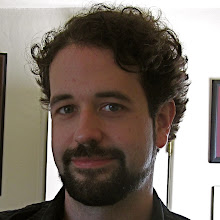In these two chapters we looked at the use of writing in formative assessments, largely in the form of note-taking and worksheets oriented around reading assignments. I'm reminded of a quote that has been variously attributed to Richard Hugo, E. M. Forester, and Saul Bellow: "How do I know what I think until I see what I write?" Writing sharpens thinking -- as I'm sure the REACH staff knew when they decided to assign us to write blog posts in response to our readings. :) We can take advantage of that by having students write in ways that will help to organize and clarify their thoughts.
One thing that I found helpful in the articles -- beyond the wide swath of different writing assignment tools, several of which look very promising -- is the notion of reading with a purpose in mind, and making that purpose clear to the students at the outset. It's not something I'd particularly thought about before, but it's true: the way I read, say, a biology textbook when researching a lesson is very different from the way I read a novel, which is different from the way I read a newspaper. Most of our students probably don't have much experience with reading for anything other than narrative, which can make other forms of reading confusing when they run into them. Using formative writing assignments will help our students to understand why they're reading what they're reading, which will hopefully help them to put the focus and effort where they are most needed.
In what ways do you currently use writing-to-learn strategies in your class?
I use "Do Now" writing assignments to activate background knowledge prior to a lesson, as well as to help them organize their thoughts about material we have discussed in previous lessons and make connections between those lessons and the new material. Sometimes these writing assignments are about purely factual issues, but often they are Thinking Questions that ask the students to speculate based on what they already know.
I have also used worksheets with short essay questions to have students respond to articles they have read. However, the amount of actual reading we have done in class so far is relatively little.
In what ways could you expand your use of these strategies?
I hope to address this tomorrow when I give my students an excerpt from "You Are Here" by Thomas M. Kostigen, in which he uncovers major ecological problems around the globe and looks at how the things we do have an impact on those problems (for good or ill). The book is part investigative journalism, part ecology lesson and part travelogue, and it makes for easy and engaging reading. Kostigen does a great job of bringing in the human element, showing (for example) the lives of illegal loggers in Borneo, or a small family of subsistence farmers in Amazonia. I am hopeful that it will help our students make connections between themselves and these far-off places where our innocent actions can cause so much lasting harm for everyone. This assignment would be a natural place to make use of a formative writing assessment, both to make the purpose of the reading clear and to help the students to identify parts of the text where they are making connections, suffering confusion or asking questions.
How can writing strategies help students “hold their thinking?”
I think that goes back to the quote at the beginning of the article: you don't really know what you think until you can put it into words. By giving students a chance to interact with the text in a structured way, you give them a chance to let their thinking crystallize so they can examine it further and compare it with the thinking of others. These structured writing assignments give students a "safe" way to comment on the text; they don't have to come up with a response out of thin air.
For the excerpt I'm going to give them tomorrow, I think that the double-entry diary and a set of "mission objectives" will give them the structure that they need in order to make sense of the reading. I'll also give them space to write down words they don't understand so we can deal with any vocabulary issues. I know that the students are doing lit circles in English right now, so they know how to engage in extended reading; hopefully I can touch base with Willi to get some pointers on how to make this happen smoothly.
Monday, November 17, 2008
Subscribe to:
Post Comments (Atom)

1 comment:
I also use Do Nows as an attempt to activate background knowledge. I like how that grounds students in thinking about their work for my class. It sounds like it has the same purpose in your class, Chris.
I think it's great that you're jumping in with the dual-entry journal, too. I wish I had had that tool to help me make sense of some tricky science concepts. I am interested to hear how you modeled this journal strategy for your students. How much did you say and show? How much was collaboration (guided practice)? and how much was left up to the students to complete on their own?
Related to our Do Now work, I wonder if there is a way to present Do Now writing assignments so that they serve multiple functions beyond activating background knowledge. I think that could help promote smoother transitions, in my classroom at least, between activities and maybe (?) help keep up the momentum and confidence that students gain when they can successfully complete a Do Now.
Post a Comment